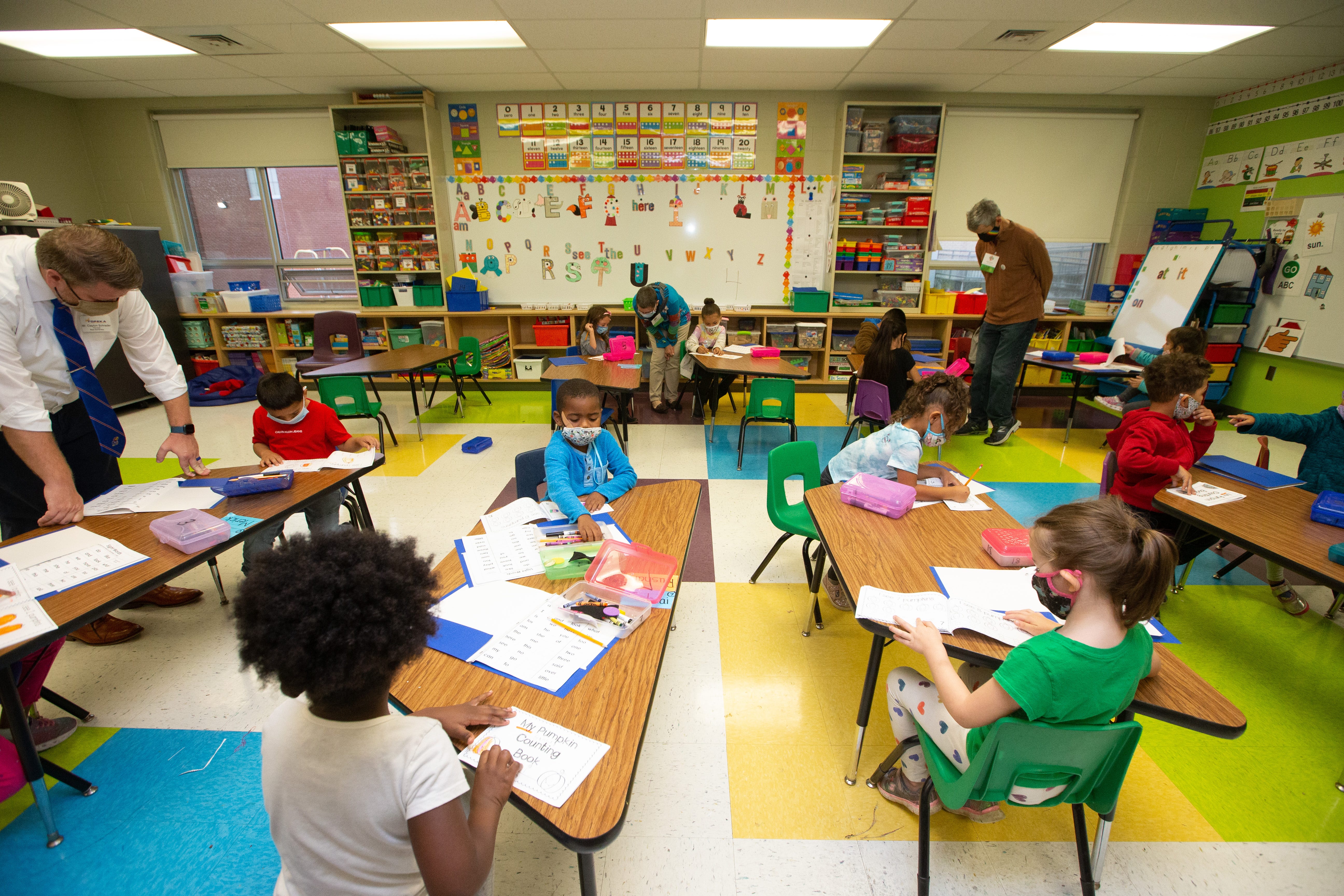A Comprehensive Overview to the Numerous Understanding Techniques in Key Science Instruction
The expedition of varied discovering approaches in primary science guideline offers a possibility for instructors to improve trainee interaction and understanding significantly. By analyzing hands-on understanding methods, inquiry-based approaches, and collaborative techniques, we can determine efficient methods that cater to different discovering styles.

Hands-On Learning Strategies
Hands-on discovering methods play a pivotal role in primary scientific research instruction, involving pupils in energetic expedition and experimentation. These methods enable learners to communicate directly with phenomena and materials, promoting a much deeper understanding of scientific ideas. By utilizing manipulatives, versions, and real-life experiments, teachers create a setting where students can observe, hypothesize, and test their concepts.
Such strategies not only improve comprehension but likewise cultivate critical reasoning and analytic skills. When students take part in tasks like constructing simple makers, growing seeds, or carrying out chemical reactions, they are encouraged to ask questions and seek solutions through their own monitorings. This experiential method aids to debunk intricate scientific concepts, making them more relatable and easily accessible.
Additionally, hands-on knowing promotes collaboration among peers, as trainees often operate in groups to carry out experiments or share findings. This synergy not just enriches their understanding experience yet also creates crucial social abilities. Eventually, integrating hands-on methods in key science direction fosters a lifelong love of understanding and interest concerning the natural world, laying a solid structure for future academic quests in science and past.
Inquiry-Based Learning
Inquiry-based knowing is a training technique that urges trainees to ask inquiries, check out phenomena, and build their own understanding of scientific ideas. This method shifts the focus from standard teacher-led direction to a more student-centered experience, where students take the effort in their instructional trip. By fostering interest, inquiry-based understanding promotes deeper involvement with the material, allowing pupils to check out subjects in a significant context.
In technique, this method typically involves hands-on experiments, monitorings, and vital thinking activities that align carefully with the clinical method. Trainees are motivated to create theories, layout examinations, and examine data, which cultivates vital abilities such as analytical and analytical reasoning. The role of the instructor in this structure is to promote expedition, leading pupils with the questions process while urging independent idea and cooperation.
In addition, inquiry-based knowing supports a sense of possession over the discovering process, encouraging pupils to seek knowledge proactively. This approach not just boosts understanding of scientific concepts but likewise fosters a long-lasting love for knowing, gearing up students with the skills essential to navigate an increasingly complex world.
Collaborative Discovering Approaches
Joint learning methods empower pupils to participate in meaningful communications with peers, fostering a common obligation for their educational results. In key science guideline, these approaches encourage learners to work with each other to discover clinical concepts, resolve issues, and perform experiments (primary science tuition Singapore). By joining team activities, trainees can utilize varied viewpoints, enabling for richer understanding and retention of clinical expertise
One secret facet of collaborative learning is the emphasis on communication abilities. Trainees have to verbalize their ideas, listen actively to others, and discuss ideas, all of which are crucial expertises in both real-world and academic contexts. This social interaction not only enhances their understanding of clinical concepts however likewise promotes team effort and problem resolution skills.
When pupils see the value of their contributions within a group, they check out here are extra likely to take ownership of their learning journey. On the whole, incorporating joint knowing approaches in primary scientific research guideline grows a dynamic learning environment that prepares students for future academic and social challenges.
Technology Assimilation in Scientific Research
The assimilation of technology in main scientific research direction enhances learning experiences by providing cutting-edge devices and sources that sustain numerous training approaches, consisting of joint discovering - primary science tuition Singapore. Making use of digital systems, simulations, and interactive applications permits pupils to engage deeply with clinical principles, promoting a more hands-on approach to knowing
Digital research laboratories, for example, make it possible for learners to conduct experiments safely and successfully, promoting inquiry-based knowing. These tools can imitate real-world scientific situations, enabling pupils to envision complex processes that would be tough to reproduce in a typical class setup. In addition, innovation cultivates communication and collaboration among trainees, as they can share findings and work with each other on projects with on the internet platforms.
Additionally, multimedia discussions and instructional video clips can enhance lessons by accommodating diverse knowing designs, making abstract ideas more accessible. Information analysis devices likewise equip students to accumulate and interpret scientific information, reinforcing essential assuming skills. Overall, the tactical incorporation of modern technology in primary scientific research instruction not only improves engagement yet additionally prepares pupils for a technologically sophisticated culture, outfitting them with important skills for future scientific undertakings.
Distinguished Guideline Approaches
Distinguished direction approaches are necessary for attending to the varied needs of learners in primary science education and learning. These techniques enable instructors to customize their training techniques to suit varying abilities, passions, and learning styles within the class. By using differentiated instruction, teachers can see this here create an inclusive atmosphere that promotes engagement and boosts understanding of scientific ideas.
One effective strategy is to utilize versatile grouping, which permits trainees to collaborate with peers at comparable skill degrees or with differing perspectives. This strategy urges peer discovering and promotes critical thinking. Additionally, supplying options in jobs can equip students, permitting them to choose projects that reverberate with their passions while still fulfilling curricular objectives.
Furthermore, including tiered assignments is another beneficial technique. By creating tasks with varying degrees of complexity, educators can guarantee that all trainees are suitably challenged, despite their proficiency. Making use of formative assessments to assess understanding more makes it possible for teachers to change their training browse around this site techniques dynamically, guaranteeing that each student gets the support they require.
Eventually, carrying out set apart direction techniques in main science education not only enhances student discovering results yet additionally cultivates an interest for scientific research, preparing students for future scholastic pursuits.

Verdict
In summary, reliable primary scientific research instruction necessitates a multifaceted technique that encompasses hands-on understanding, inquiry-based techniques, and collective strategies. The combination of innovation and differentiated guideline better satisfies varied knowing styles, fostering an environment for exploration and important thinking. By implementing these strategies, instructors can improve student interaction and comprehension, ultimately nurturing a lifelong interest for science and questions. Such extensive techniques are crucial for creating educated and interested future scientists.
The exploration of diverse knowing techniques in main scientific research instruction offers a chance for educators to improve trainee interaction and understanding substantially.Hands-on discovering methods play a pivotal function in primary scientific research instruction, engaging students in energetic expedition and trial and error.Inquiry-based discovering is an educational strategy that encourages pupils to ask questions, explore sensations, and construct their own understanding of clinical concepts.Collective understanding techniques empower students to engage in purposeful communications with peers, cultivating a common obligation for their instructional outcomes. Overall, including collaborative discovering approaches in primary science guideline grows a vibrant learning setting that prepares students for future academic and social obstacles.
Comments on “The Best Primary Science Tuition Singapore for Effective Learning Methods”